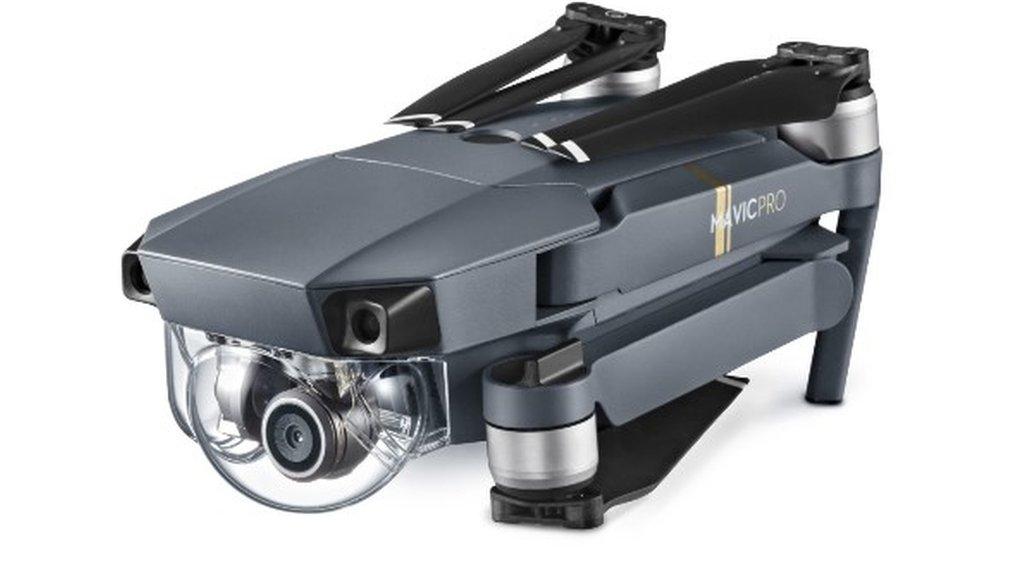Mavic Air: DJI launches 'ultraportable' drone
- Published

The Mavic Air is said to be half the size of the Mavic Pro
DJI has unveiled the Mavic Air drone, a successor to its top-selling Mavic Pro that is smaller, lighter and faster as well as promising more advanced obstacle-avoidance tech.
There are, however, trade-offs: it has a shorter flight time and cannot travel as far from its operator.
DJI is the top-selling consumer drone-maker and recently saw a major rival, GoPro, drop out of the market.
Despite the advances, the Air will be sold for a lower price than the Pro.
It will be released on 28 January for $799 in the US and £769 in the UK.
That is $200/£330 less than the Pro's base model, which remains on sale.
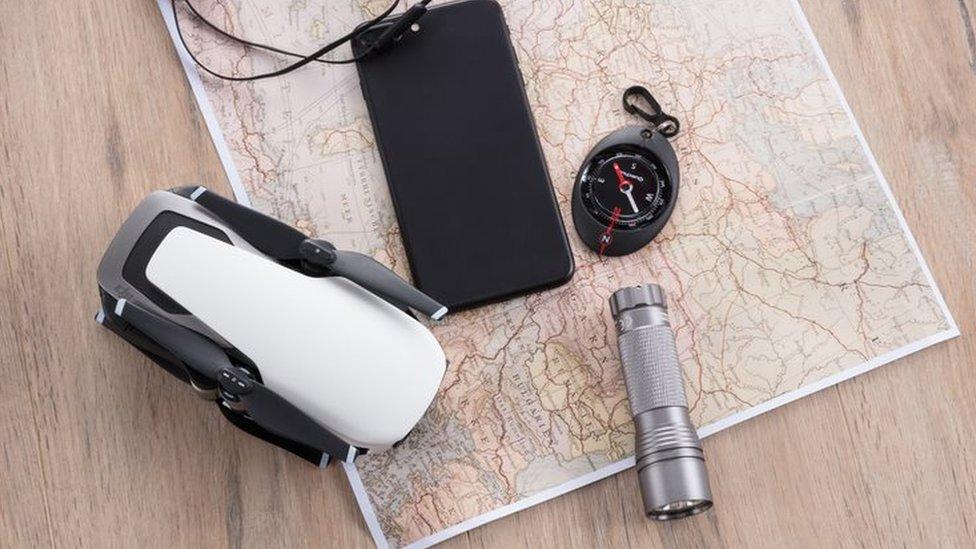
DJI compared the size of the Mavic Air to that of a smartphone
While that may make it more attractive to new buyers, one film-maker questioned whether the firm had done enough to convince existing users to upgrade.
"For it to attract current Mavic Pro owners, it will need to offer improved video quality to tempt them as they would already be invested in multiple spare batteries, which won't be compatible with this new model, as is the case for every new model that DJI brings out," Philip Bloom told the BBC.
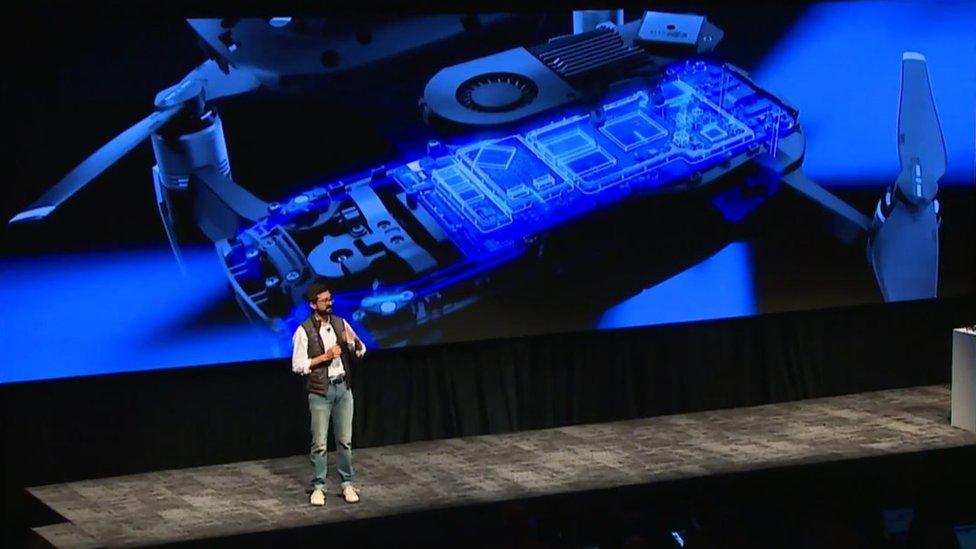
DJI said it had designed a new ventilation system to keep the drone's components cool
Both the Air and the Pro film 4K video at up to 30 frames per second.
But the Air's peak image capture rate is 100 Megabits per second (Mbps), which in theory should trump the quality that the Pro's 60Mbps delivers.
In addition, DJI said the new model can capture slower-motion video at 1080p high definition resolution, and also has an improved anti-shake gimbal mechanism to keep footage smooth.
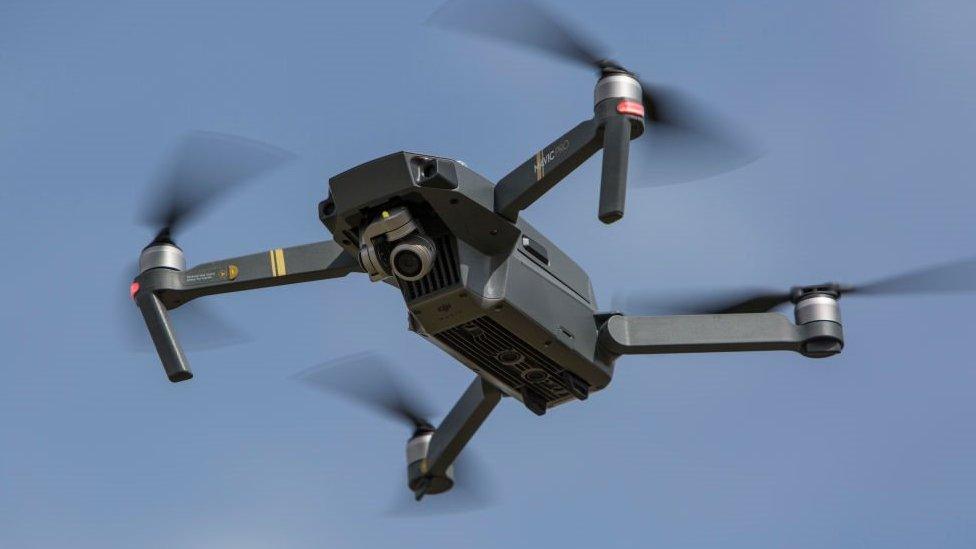
DJI said that the Mavic Pro had been its bestselling model to date
The other key differences are:
the Air weighs 430g (0.95lb), making it 41% lighter than the Pro
when folded the Air is about half the size of the Pro
the Air's maximum speed is 68.4km/h (42.5mph) versus the Pro's 65km/h (40mph)
the Air's maximum flight time is 21 minutes, shorter than the Pro's 27 minutes
the Air's maximum control range is 4km, less than the Pro's 7km
The Air also introduces the ability to automatically stitch 25 photos together to create panoramic shots.
Furthermore, if it encounters an obstacle in its path it can be set to automatically plot a new route above or around the object rather than just hovering on the spot.
"This is the most portable, intelligent and powerful drone ever," DJI's director of North America claimed at the New York launch.
He did not mention whether a second-generation Pro model was planned, as many still expect.
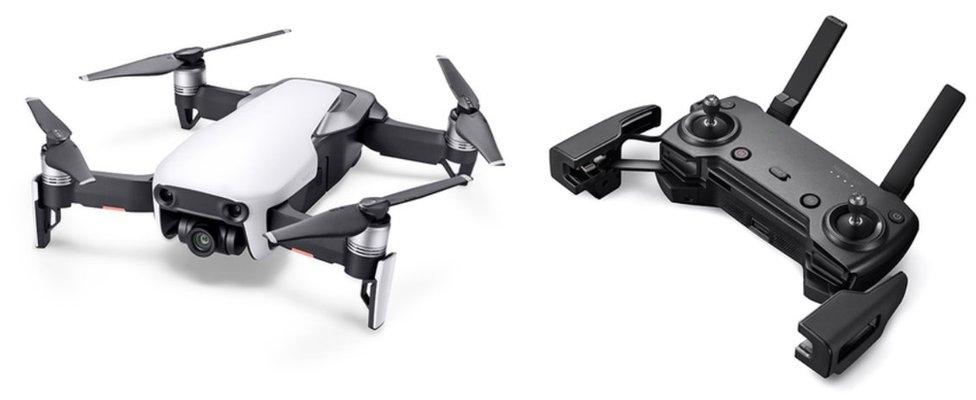
The new drone comes with a new controller
The Air's launch comes 16 months after the Pro was unveiled and eight months after the Chinese company launched the Spark, a budget quadcopter with less advanced video features.
By contrast, GoPro only managed to release a single drone - the Karma - over the same period, and that had to be temporarily pulled from sale after a fault caused some units to fall out of the sky.
Earlier this month, the US firm announced that it was quitting the drone business despite previously saying that it was working on a sequel, external.
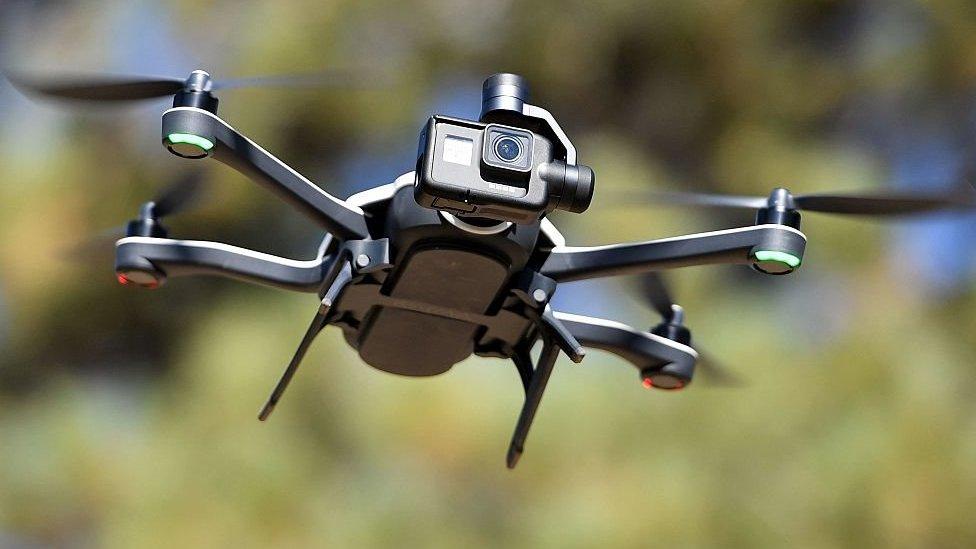
GoPro's fold-up Karma drone had a troubled launch
That leaves another Chinese firm, Yuneec, as DJI's main competitor.
However, it has a much smaller share of the market.
According to a report by Skylogic Research, external, DJI accounted for 72% of all sales of $500 to $1,000-priced drones in the US in the year to September.
By contrast, Yuneec had just 7%.
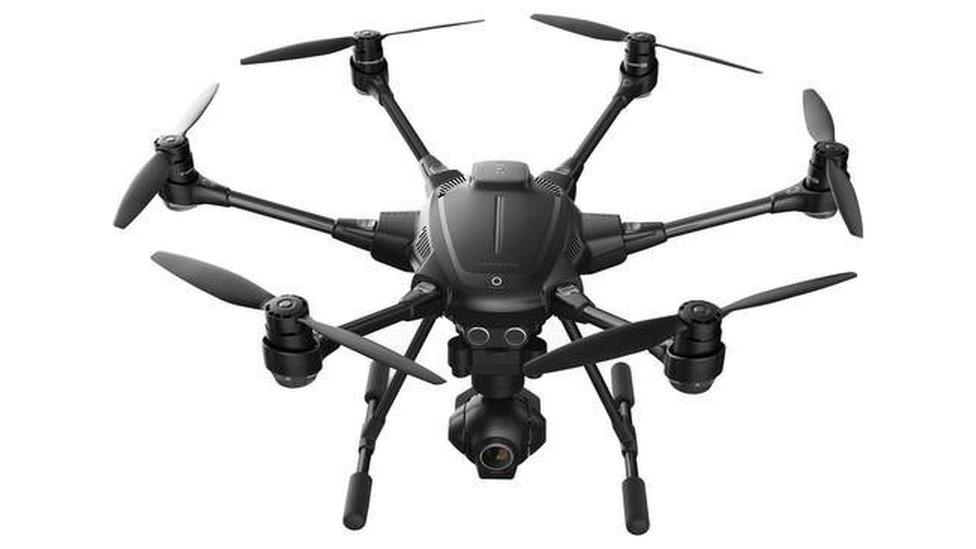
Yuneec's Typhoon H has folding rotors, but remains much larger than DJI's Mavic series
"DJI has dominated the market for years but it remains to be seen just how much it continues to innovate with no real competition," commented Mr Bloom.
"We have already seen a slowdown in releases: a new [higher-end] Phantom used to come out every year but the Phantom 4 hasn't been replaced despite being released back in April 2016."
- Published10 January 2018
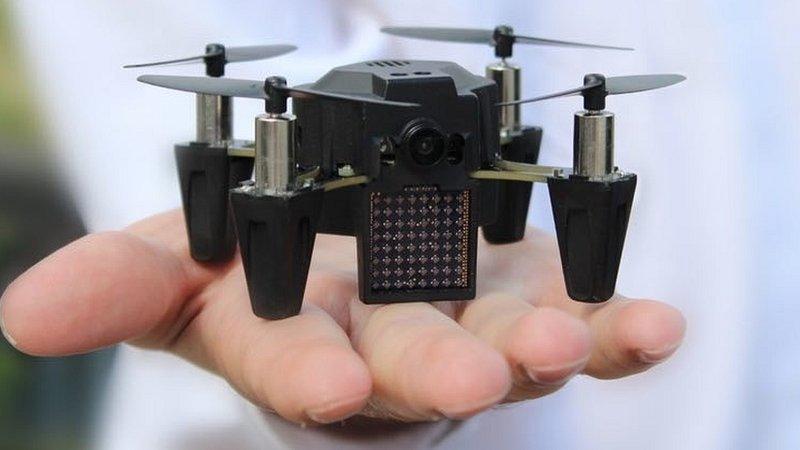
- Published9 January 2018
- Published23 December 2016
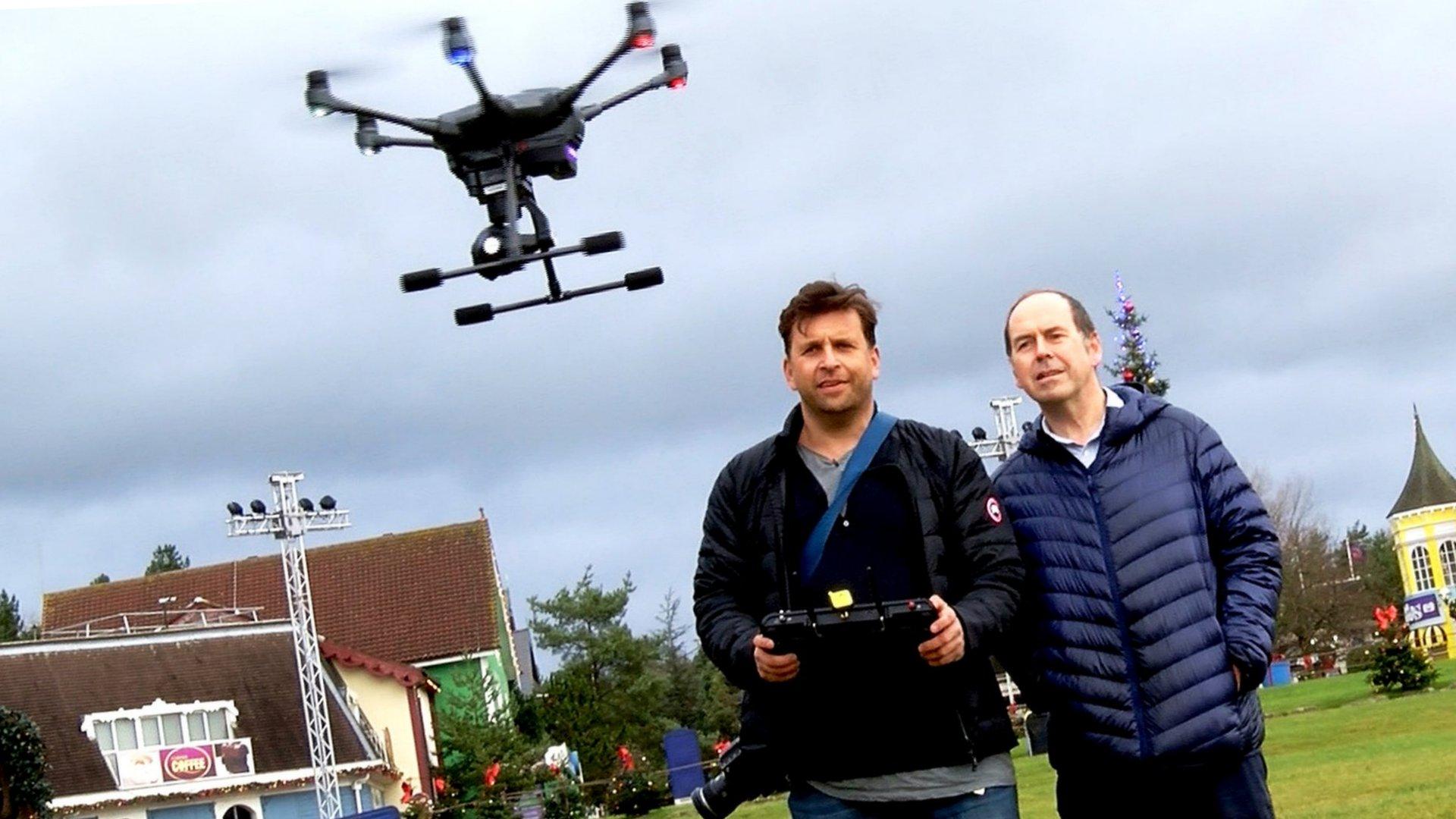
- Published27 September 2016
